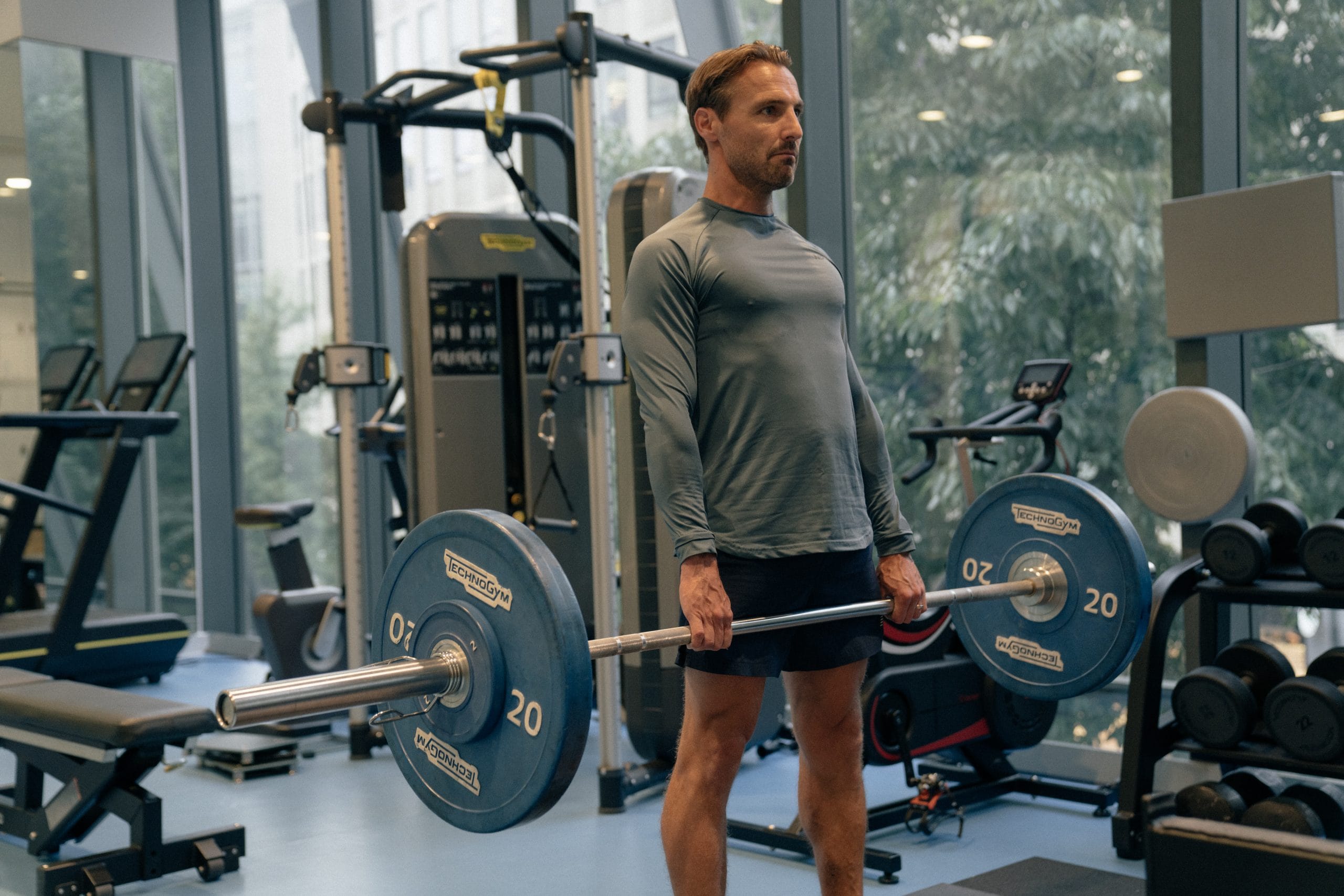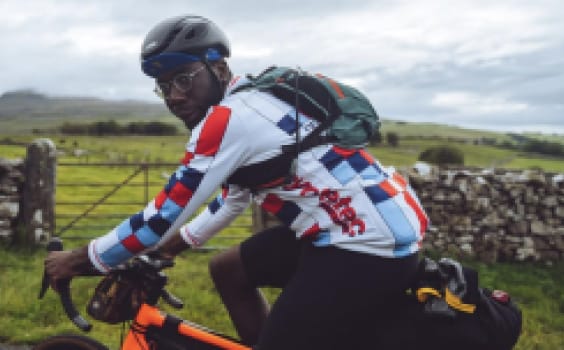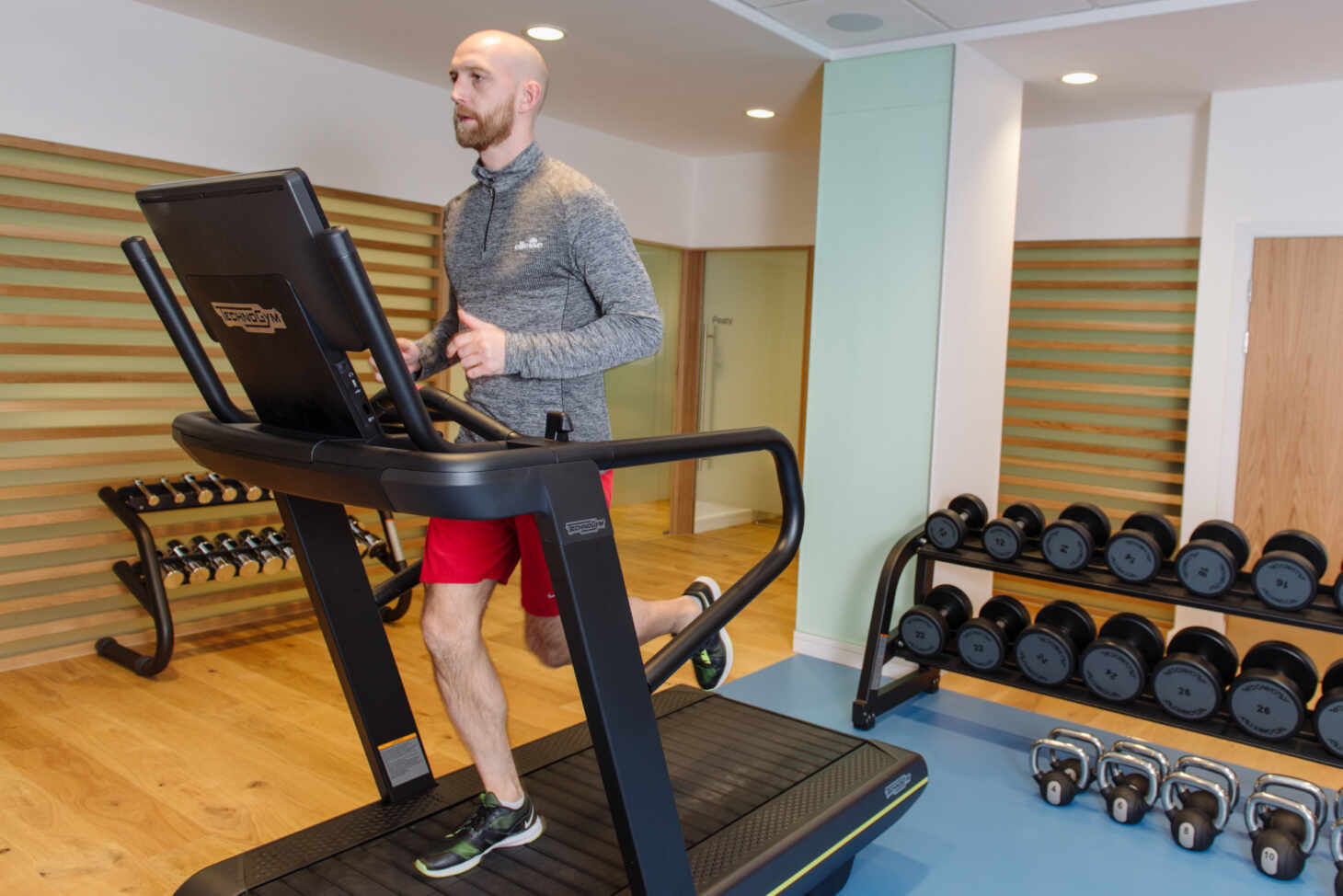My Ironman Experience: Challenges, Triumphs & Lessons Learned

Pure Sports Medicine
- 14 March, 2022
- Exercise
- 9 min read
On 21st March 2020 I was living in Dubai and the world had started to take stock of what appeared to be a “pandemic” with lockdowns impending globally. Up until a week before, I had blithely assumed I would make my Ironman start line in Port Elizabeth, South Africa on the 29th March 2020.

Throughout my training I had imagined what it would feel like on the day when I would cross the finish line, with tears of pride and relief, as they announced “Miranda, you are an Ironman!”.
I was due to fly out on 22nd March 2020, however the borders to South Africa closed on 14th. It seemed my dream would have to wait.
But this was an event I had trained 9 months for, and sacrificed so much for, so I was determined I would complete it, one way or another.
Just two days after South Africa’s boarders were closed my Triathlon Coach Tom Walker, had come up with an idea; he would support me to do one at home, in Dubai. I would swim in the sea, cycle the Al Qudra desert track, and then run 42.2km on the cycle track.
Tom recognised I needed to do something to honour my months of training, and in his words he would “happily be the support vehicle, feed station, crowd, finish line and announcer”. He planned the cycle and running routes to ensure I would hit the distances, and organised spots where he could meet me to deliver nutrition and assistance as required.
Initially I had been all for the idea of a ‘Covid-19 Ironman’, but as the week had passed my enthusiasm had dwindled significantly. With Covid fast effecting every person on the planet, the lead up to the event felt quite overwhelming.
The combination of my body being burnt out from training (meaning I was likely immunosuppressed) and my job putting me at an increased risk of contracting the virus because it was public facing, did scare me.
24-hour count down…
24 hours before, I didn’t feel I was in the right headspace. I had pulled my hamstring in a previous run – and hadn’t run since – and my left ankle was playing up, so the idea that I was going to put my body through an Ironman – which wasn’t even a real Ironman, where no-one could come and support me, with a massive storm forecasted – seemed like a slightly foolish decision! I decided to focus on the game plan and get a good night’s sleep hoping I’d feel differently when I woke up.
Race Day
I awoke at 4.30am to torrential rain lashing the side of our apartment block and wondered whether the day would even go ahead. Refusing to be the one to call it off I dutifully ate my breakfast and set about sorting out my nutrition that I would need for the day. By the time I left for the beach at 5.30am, the storm had subsided, and this ‘Ironman’ suddenly became very real.
The Swim
I swam 3.8km in a choppy sea, under a thundery grey ominous sky, with my coach and my flat mate watching on in their cars. I completed the first leg of the event in 1 hour 11 minutes, which I was happy with, and thankfully by the time I came out of the water, any anxieties I had about the day had settled.
The Cycle
My flat mate drove me out to the desert cycle track whilst I took on a gel, a banana and half a bottle of training mix, in what was essentially ‘T1’. I de-sanded my feet, put on my socks and shoes, crammed my nutrition into my pockets – decided that there was no need whatsoever for sunglasses or sun cream – and began the cycle!
It was raining heavily, and the winds were reasonably strong. I had cruised at around 38km/h for the first 40+ kilometres, and genuinely thought to myself how great this was. I vaguely acknowledged that with my power so low (around 130w), I would have some sort of head wind when I turned back.
I thought things were looking up as the rain stopped, and the clouds became less heavy, offering glimpses of blue sky, but unfortunately as I made the turn, reality hit me. I dropped from around 38km/h to 20km/h in less than a minute, and my wattage flew up. Not ideal.
I repeated a mantra my coach had relayed to me; “process over emotion”. I knew I had to be patient, not let the ego take over, and save my legs for the run. I was only about 45km into the cycle (not even a quarter of the way through) when I noticed that my bike, and my legs, were caked in sand and silt, and my chain had started to seize a little which made moving between gears a real struggle.
15km further along I approached my first ‘support station’ in the form of my coach in his truck. He restocked my water bottles with training mix as I took on some more gels before heading back out into the wind; knowing that within 50km I could turn again and cruise with a lovely tail wind. During my pit-stop Tom had also emptied an entire bottle of chain oil into the chain rings, which allowed for a significant improvement in pedal stroke, immediately making me feel more settled.
However, even with the improved pedal stroke, the next 25km were painful and slow. My legs were starting to feel the burn and my left hamstring was pulling. I remember looking at my watch and seeing that I had only done 70km – not even a 70.3 distance. I was doing no more than 16km/h and holding around 160w, which felt demoralising, so I decided that it was best not to focus on my watch too much.
The bike continued as it started; a yoyo of tail and head winds that battered both my legs and ego more than any previous training ride. The good news was my fuelling plan seemed to be working – 40-60g carbs an hour, hydration as required, solids once every 90 minutes to keep the tummy from going to pot – and the saddle soreness I had struggled with on long training rides had dissipated.
With 30km to go, the soles of my feet were burning. They were so sore I was intermittently gripping my handlebars, pulling myself into my seat and trying to lift my feet up into the tops of my cycling shoes for relief. My hamstring was still niggling, my legs were like lead and I was sunburnt on the back of my neck and my arms.
The sandstorm was probably the worst I had ever cycled in. I battled indescribable cross winds for the final 10km, and noticed the skies were greying again, meaning rain was threatening my run.
I remembered being told by Tom that at some point during the event, “you would get to around 160km and want any excuse to quit” – he said that I would even consider throwing myself off my bike. I hit that moment at 150km. I genuinely didn’t care if the wind took my bike out, and me with it. However, it was also that point where quitting was the harder option than continuing. I had struggled so much in this cycle; it had battered my ego, floored my Strava ratings, and was by far the longest I had ever sat on my bike. So, because of all that, I wasn’t going to quit of my own accord. After 7.5 hours and 189km I met my Coach for the last stretch of the event.
The Run
Tom handed me my trainers, gave me my running nutrition and a few simple words of encouragement to get me on my way. The salt marks on my tri-suit, my sunburnt arms and face, and ragingly sore soles, all indicated that this day had already been long enough. But despite feeling exhausted, and very close to tears, I jogged back out into the desert and towards the storm clouds for my final leg.
I read somewhere in someone’s race report that you should ‘do it with a smile on your face’, otherwise what’s the point? It is so true; as soon as I smiled, I felt instantly better. I also relaxed. I focused on keeping my pace between 6-6.15km/h, keeping my strides short. I understood it was going to hurt but it wouldn’t last forever. Pain is, after-all, temporary.
At some point a friend who I trained with joined me on his bike, whilst his wife drove alongside with their daughters. For the first time all day, I felt like I was doing a real event, with supporters, and people on the sidelines who believed in me. It was fantastic! I barely even noticed the rain starting again.
Before I knew it I had run 18km; my ankle and hamstring issues were a thing of the past, day had turned to night, and there was the most incredible electrical storm over the desert lighting my way. Even a short burst of hail, which came down the size of golf balls, did absolutely nothing to hamper my spirits.
By 24km my stomach was on the turn, so I slugged at least three gulps from each gel; after-all, these long-distance events are basically a nutrition game. I can’t remember much about the last 17km, but I definitely didn’t feel like I was suffering – I think I simply felt numb. It became only about putting one foot in front of the other.
The Home Stretch
Close to the end, I was greeted by the most incredible sight – a group of (socially distanced) supporters. By this point, my stomach was cramping, I had to walk every time I thought I might need the loo (to prevent any accidents!), both my ankles had unfortunately now seized up, and I was shuffling more than running to try and minimize all the aches.
During those final kilometres I cried, and laughed, and cried a bit more; I realised how little self-belief I had had, and what I could actually achieve. I thanked my stubbornness because that is what probably got me through the day!
I also thought about Esme; my cousin’s beautiful little girl who sadly lost her battle with Leukaemia on New Year’s Day 2020. For all the pain I was in, and the mental and physical suffering I had gone through, it wasn’t a patch on what that gorgeous little three-year-old went through, and for the most part, she did it with a smile, sass, humour and defiance, and the saddest part is that she submitted to it as if that was all life had to offer. I felt so privileged to be able to choose this pain, to find that deeper level, knowing that it wasn’t permanent.
As I turned for my final few hundred metres, I saw a mock finish line erected in the distance. I had a gold ribbon to run through with balloons flapping around in the wind and my friends and coach, all wrapped up, cheering me in! A perfect finish.
That Post Race Feeling
Jan Frodeno says, “I am made of all the days you don’t see – not just the one you do”. I knew I had to love the process, and the training, for this to succeed. The people I had the privilege to train with along this journey, from the oldest and slowest to the youngest and fastest, all inspired me every day to be better.
We all came together for a common purpose; the love of what endurance sport gives us. I learnt so much during the process; to trust my gut instinct, to be kinder to myself and to have more self-belief. I have developed a new level of self-respect and have less time for stuff that doesn’t serve me. I have learnt that I feel my emotions very physically in my body, and that I have to pace myself to manage these symptoms.
I signed up on the 14th of August 2019, full of enthusiasm and total naivety of the journey involved in getting to the start line of an Ironman; I simply wanted to finish, stick to a training plan consistently, and see what I was capable of.
I can’t officially call myself an Ironman (yet), but I completed the distances, in 13 hours and 56 minutes, on Saturday 21st March 2020. It wasn’t the race I had in mind, nor the race I had trained for, but something infinitely more superior to anything I will ever do again in my life.
My main tips & takeaways:
- You need a plan, for everything. If you don’t do the small things right, the big things will work out.
- Surround yourself with people who believe in you. You are the sum of the people you spend the most time with, so make sure they inspire, lift, and motivate you to achieve your goals.
- Listen to your body – if you are feeling overwhelmed emotionally, the chances are, your body physically needs a break too.
- You can’t do everything. Learn what your priorities are. It makes life simple in the long run.
- Take pride in what you do and always do it with a smile.
- One day does not define success or failure – be kind when you make a mistake or miss a training session. Punishing yourself will not help you – re-evaluate how you are doing things, talk to your coach/support team, and find a better way.
- You don’t have to have it all figured out before you start – just take the first step and the rest will follow.
- Work harder on the things you can control and worry less about the things you can’t.
- Set a goal big enough that it scares you and commit. Get yourself a coach, or a training plan, to aid the process.
- Life really is about the journey, not the destination.
If you are thinking of doing any Ironman, whether it is your first or your one hundredth, or any endurance sport, please do get in touch for help along your journey.
Our strength is in working together, adopting a multi-disciplinary approach to recovery and training, to help you achieve your goal. We have Physiotherapists to help with niggles and injuries, Strength and Conditioning Coaches and Soft Tissue Therapists to help with training plans and recovery, Podiatrists for any foot and trainer related issues, and Sport & Exercise Consultants for any medical or undiagnosed complaints you may have.

Advice
Over the last 20+ years our experts have helped more than 100,000 patients, but we don’t stop there. We also like to share our knowledge and insight to help people lead healthier lives, and here you will find our extensive library of advice on a variety of topics to help you do the same.
OUR ADVICE HUBS See all Advice Hubs

